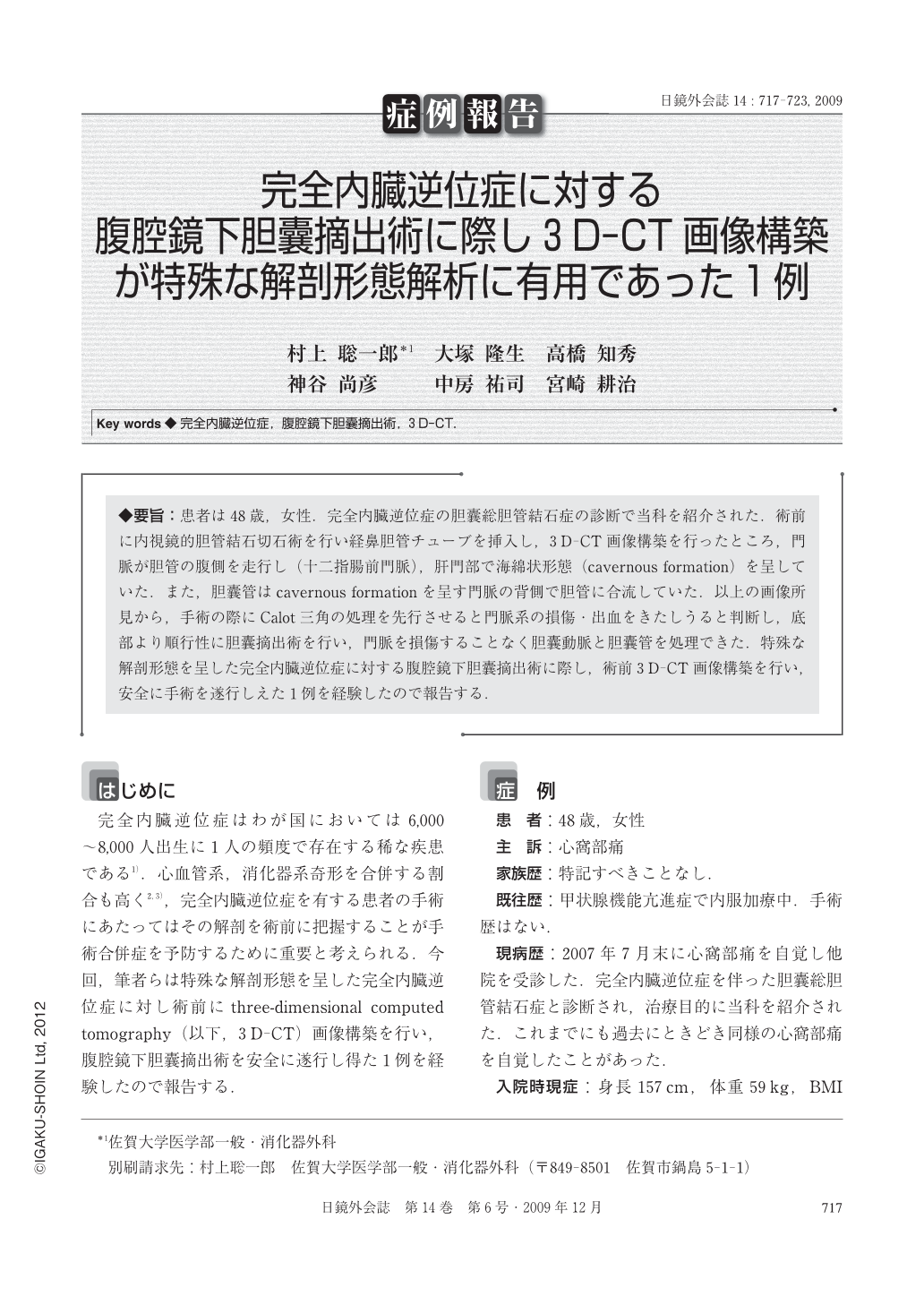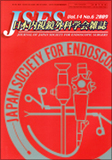Japanese
English
- 有料閲覧
- Abstract 文献概要
- 1ページ目 Look Inside
- 参考文献 Reference
◆要旨:患者は48歳,女性.完全内臓逆位症の胆囊総胆管結石症の診断で当科を紹介された.術前に内視鏡的胆管結石切石術を行い経鼻胆管チューブを挿入し,3D-CT画像構築を行ったところ,門脈が胆管の腹側を走行し(十二指腸前門脈),肝門部で海綿状形態(cavernous formation)を呈していた.また,胆囊管はcavernous formationを呈す門脈の背側で胆管に合流していた.以上の画像所見から,手術の際にCalot三角の処理を先行させると門脈系の損傷・出血をきたしうると判断し,底部より順行性に胆囊摘出術を行い,門脈を損傷することなく胆囊動脈と胆囊管を処理できた.特殊な解剖形態を呈した完全内臓逆位症に対する腹腔鏡下胆囊摘出術に際し,術前3D-CT画像構築を行い,安全に手術を遂行しえた1例を経験したので報告する.
We report herein a case of laparoscopic cholecystectomy for a patient with total situs inversus with abnormal anatomical variance of the hepatic hilum, in which preoperative three-dimensional computed tomography(3D-CT)was useful as a treatment strategy. A 49-year-old female with total situs inversus was admitted to our hospital because of symptomatic cholecystocholedocholithiasis. After an endoscopic choledocholithotomy and subsequent insertion of the endoscopic nasobiliary tube, 3D-CT demonstrated that the preduodenal portal vein formed a cavernous formation at the hepatic hilum. The cystic duct joined the bile duct behind the cavernous portal vein, and the cystic artery was also detected in the Calot's triangle. Choloecystectomy from the fundus was performed during the laparoscopy because cholecystectomy from the neck increases the risk of portal vein injury. The cystic artery and the duct were ligated under intraoperative cholangiography using the nasobiliary tube, and all procedures were safely completed without any injury of the hepatoduodenal ligament.

Copyright © 2009, JAPAN SOCIETY FOR ENDOSCOPIC SURGERY All rights reserved.


